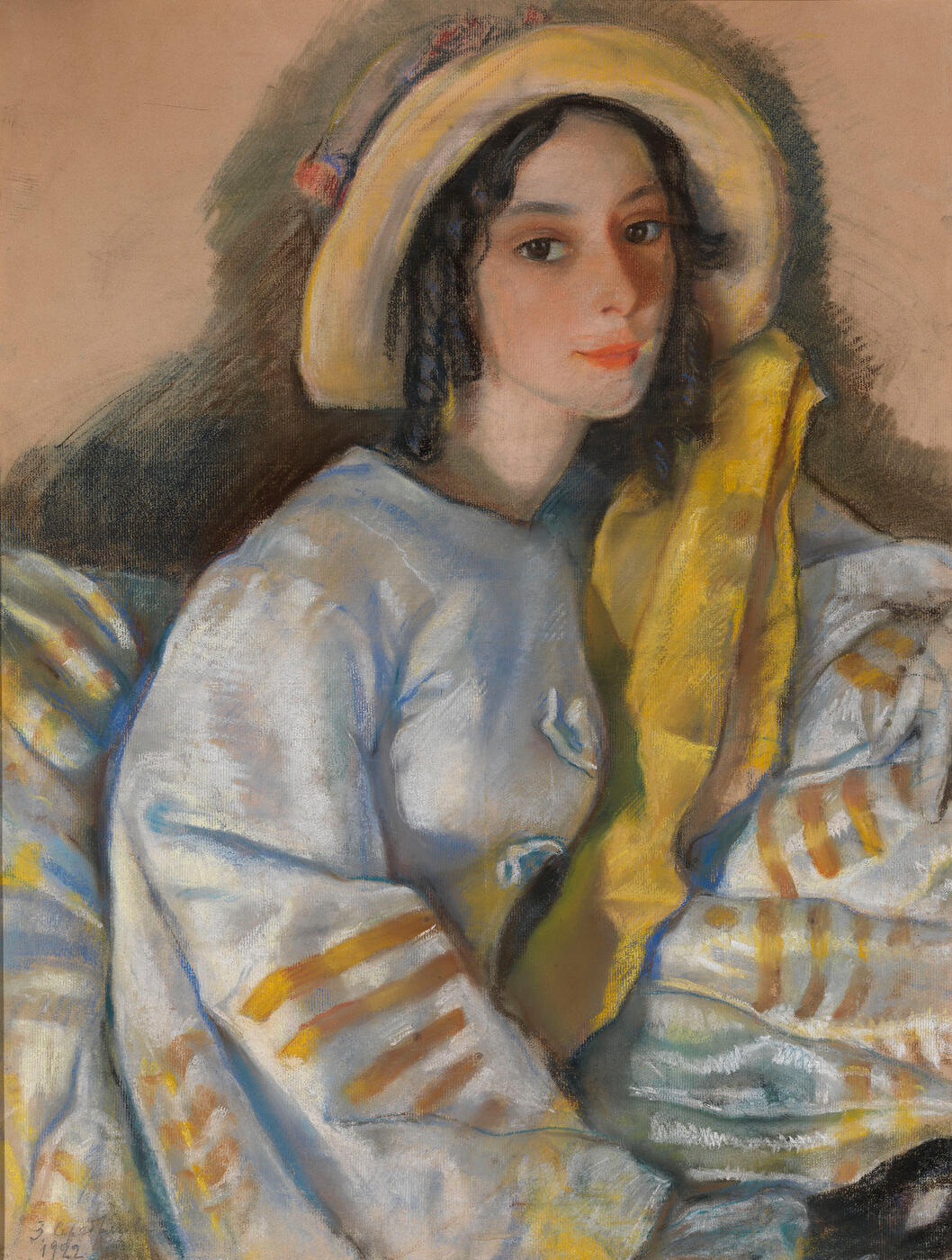MacDougall's Russian Art Auctions 27-30 May 2012
27 May 2012

§ 12. SEREBRIAKOVA, ZINAIDA (1884-1967)
Portrait of Marietta Frangopulo, signed and dated 1922.
Pastel on paper, laid on cardboard, 63 by 49 cm.
200,000–300,000 GBP
Provenance: Collection of L.G. Loitsyansky, Leningrad.
Private collection, UK.
Exhibited: Zinaida Serebriakova, The State Tretyakov Gallery, Moscow, 1986.
Literature: B. Ugarov et al, Zinaida Serebriakova. Katalog vystavki: sbornik materialov i katalog ekspozitsii k 100-letiyu so dnya rozhdeniya
khudozhnika, Moscow, Sovetskii khudozhnik, 1986, p. 165, listed; p. 168, illustrated.
V. Kruglov, Zinaida Serebriakova, St Petersburg, Zolotoi vek, 2004, plate 75, illustrated.
The present portrait of the ballerina Marietta Kharlampievna Frangopulo (1901–1979) belongs to Zinaida Serebriakova’s brilliant cycle of theatre works from the years 1922–1924. As early as January 1922 the artist’s mother Ekaterina Nikolayevna
Lanceray was writing “This winter we have plunged right into the world of ballet. Zina draws ballerinas about three times a week, when some young ballerina will pose for her... and twice a week Zina takes her sketchbook into the wings to draw ballet dancers”. Here, behind the scenes at what had been the Mariinsky Theatre, the artist also made the acquaintance of a cheerful and sociable young ballerina who in her narrow circle of friends called herself “the free Hellene” (her father was of Greek extraction, a top official in a Petersburg bank). Marietta Frangopulo, soloist at the time with the Academic Theatre of Opera and Ballet, had recently been a fellow student of George Balanchine’s, graduating in 1919 from the Petrograd College of Choreography. She idolised poetry, and gave excellent renditions of the verse of Alexey Apukhtin and Igor Severyanin.
The first pencil portrait of Frangopulo by Serebriakova was of her performing an arabesque in a dance class during the winter
of 1921–1922: it is now held in the Chuvash State Art Museum. The crowning jewel of the artist’s ballet series, however, is the present portrait of 1922 in which the actress is depicted in a costume made after the designs by Bakst for Diaghilev’s one-act ballet Carnaval set to the music of Robert Schumann. The portrait is in pastel and, as Serebriakova’s daughter Tatiana
later wrote: “in a manner uniquely hers, using thickly applied pastel, light hatching and stump-work technique”.
In the same year, 1922, her best ballet portraits – Marietta Frangopulo, Lidya Ivanova and Alexandra Danilova in their costumes for the Pas de trois in Nikolai Tcherepnin’s ballet Armida’s Pavilion, E. Svekis in the costume for her character in Sleeping Beauty and a number of others – were shown at the World of Art exhibition in Petrograd. Their resonance was widely felt and
Konstantin Somov liked them very much, writing in his diary: “I have been persuading Zina to do a big ballet portrait picture using the sketches I have seen!” Serebriakova followed his advice, and right up until her departure from Russia in 1924 worked passionately and prolifically to “paint ballet”, creating renown for herself as “the Russian Degas” as well as a whole suite of portraits and genre compositions dedicated to the theatrical world. Among them was one further pastel portrait of Frangopulo (1924), which is now the pride of the Museum of the Academy of Russian Ballet.
Notes on symbols:
* Indicates 5% Import Duty Charge applies.
Ω Indicates 20% Import Duty Charge applies.
§ Indicates Artist's Resale Right applies.
† Indicates Standard VAT scheme applies, and the rate of 20% VAT will be charged on both hammer price and premium.